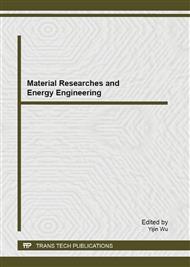p.303
p.309
p.313
p.319
p.325
p.331
p.337
p.343
p.349
Effect of Calcining Temperatures on the Morphology and Crystallinity of Strontium Doped Hydroxyapatite Nanopowders
Abstract:
Strontium appears to be one of the most effective substances for the treatment of osteoporosis and other bone-related conditions. Since calcium and strontium share the properties of group 2A elements, strontium can replace calcium in bone without much difficulty. Additionally, non-radioactive strontium also deposits in bones and behaves like calcium; therefore it enhances bone density and resistance to osteoporotic fractures. In this study, 10 wt% strontium doped hydroxyapatite (SrHA) nanopowders were synthesized through a sol-gel method. The obtained gel was dried and subsequently subjected to 500, 600, 700, 800 and 900 oC calcination. At 500°C calcining temperature, the SrHA nanopowders are still in amorphous state but starting to become crystalline when heated to 600°C, 700°C and 800°C. Increasing the temperature to 900 °C originates more intense and sharp peaks, corresponding to an increase in the mineral crystallinity, which is compatible with particle growth. Morphological evaluation by FESEM shows that the nanopowders calcined at 500°C and 700°C are in spherical shape and highly agglomerated. At 900°C the SrHA particles are still in globular shape with a mean diameter of 1-2 μm. The primary particles have diameter of 30-50 nm in average. No secondary phase was detected in these nanopowders, correlated to nearly 100 % presence of HA.
Info:
Periodical:
Pages:
325-330
Citation:
Online since:
September 2013
Authors:
Keywords:
Price:
Сopyright:
© 2013 Trans Tech Publications Ltd. All Rights Reserved
Share:
Citation:


